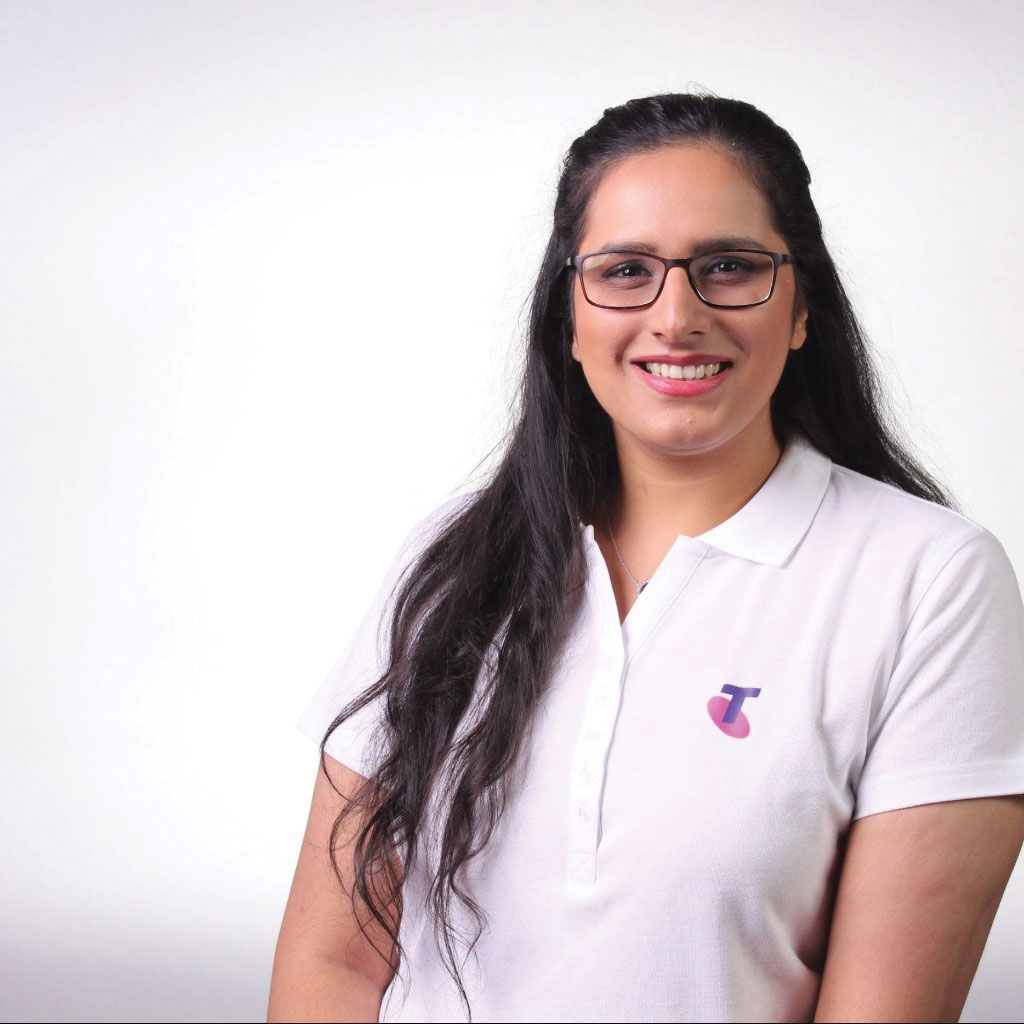From connected vehicles to environmental monitoring, Ami Pasricha sees game-changing potential in the Internet of Things.
For Telstra network engineer Ami Pasricha, a temperature sensor by itself can tell you the temperature. But connect that temperature sensor to the Internet and suddenly the possibilities are endless.
Pasricha is developing an environmental monitoring product that attaches sensors — such as temperature sensors and float switches — to Internet-enabled devices.
These could be used in the big agritech market to help farmers monitor their crops. Or a utilities company could use them to monitor electricity or water consumption using smart meters.
But Pasricha, who is also the former head of Robogals Global, sees this Internet of Things (IoT) technology disrupting everything from activewear to the entire supply chain.
Where the wireless things are
IoT refers to a network of physical objects that collect data from their environment and are connected through the internet. The “things” are often sensors, such as heart rate monitors or soil moisture detectors, that digitise the physical environment.

There are already more than 16 million IoT devices installed in Australia, according to the Australian Communications and Media Authority. Digital consulting firm Ovum estimates that by 2022, Australian homes will host more than 47 million IoT devices, and the value of the global market will exceed US$1 trillion.
Pasricha said a big strength of IoT is its ability to generate alerts in the event of a fault, pointing to Telstra’s IoT solutions as an example.
“That’s able to do things such as leak detection,” she said. “That will inform the customer that there’s an issue.”
A smart device could be used to alert a farmer to an overflowing water tank after heavy rain, for instance.
Or the technology could be employed to track a network of refrigerated trucks delivering food or medical supplies around the country. If the temperature drops, the system would trigger additional air-conditioning.
Such an environmental monitoring solution is a good example of the short and long-term benefits of IoT, Pasricha said. On a single day, a farmer could use the sensors to detect crops that need watering. Over several years, the data collected can help identify trends in a particular environment.
From fashion to food
Pasricha said that the IoT is so diverse it can be scaled across most industries.
“We’re getting into the phase where we’re more focused on innovation,” she said. “We’re innovating by taking existing technologies [and] putting them together in a new way for a new use case that we wouldn’t have thought of before.”
Pasricha said the IoT could, for example, be used to track the freshness of food across the supply chain. Even fashion could be in for a shake-up, with smart clothing that monitors our heart rate and other vitals.
“If people are hiking and they experience dehydration or other issues, then monitoring their data means that emergency services can be notified immediately in the case when the person has lost consciousness,” she said.
More broadly, Pasricha expects a host of new IoT applications to emerge from connected vehicles, traffic management and CCTV.
“There’s a lot of potential for it, and we’re only just scraping the surface at the moment,” she said.
Pasricha sees big opportunities in the data created.
“People are using so much tech, which means that there’s a lot of data going around,” she said.
“Being able to connect things so that they can communicate to each other and pass on that data and information … gives us a huge advantage. We’re able to collect that data, analyse it and draw insights that can really help industries, businesses and individuals.”
Pasricha said IoT systems could eventually contain millions, if not billions, of IoT devices. That’s a big challenge for Australia’s network infrastructure.
“It is growing exponentially,” Pasricha said. “Our network needs to be able to support this.”
At full sprint
Pasricha now works on TelstraDev, the telco’s developer portal and application programming interface (API) and IoT marketplace. Alongside the IoT work, she has been looking at new API products and services, given how widespread they will be in the future.
Since 2019, she has been working in two-week sprints, aiming to deliver value to customers in this rapid timeframe. Big projects are broken down into smaller elements that can be completed within one sprint. This replaces the traditional “waterfall” approach to project management.
“We are working more efficiently, reducing our time to market and failing fast,” she said.
Pasricha said she loves understanding and improving an entire customer journey.
“I like to look at something end-to-end and understand what’s required from start to finish,” she said.
Through her roles, Pasricha has found a niche with business and marketing skills that complement her technical expertise.
“I like learning about the impact that you can have by creating products and working with technology,” she said. “And just how much technology can influence people’s lives positively. I think that in itself is quite rewarding as an engineer.
Increasing awareness
She fell into engineering after seeing her brother study it at university. Later, as Chief Executive of Robogals Global, she worked to put engineering on the radar for other girls. The organisation runs free volunteer-led engineering and technology workshops for students.
“Our [school] curriculum doesn’t include technology and engineering enough for a student — regardless of their gender — to really have a good idea of what engineering is, in order to make that decision to study it,” Pasricha said.
“We need to raise more awareness and make younger students realise that engineering can be a great option, even for young females.”
Pasricha also worked with large corporates on their diversity and inclusion policies, coming up with strategies to make workplaces more inclusive of women.
“We need to work with the industry and broader community to ensure that women feel supported if they choose to pursue a career in engineering,” she said.
“So that they don’t have to face the issues and blockers that traditionally women have faced in this industry.”
